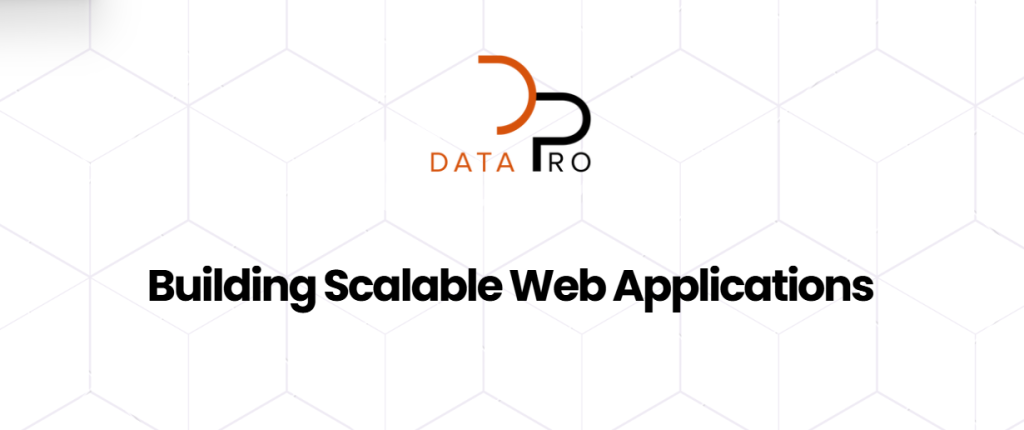
Building Scalable Web Applications: Best Practices and Tools
In today’s digital-first world, businesses must provide engaging, high-performing web experiences to stay ahead. A scalable web application is not just about handling increasing traffic; it’s about delivering a seamless and captivating experience that fosters user engagement and drives growth. Building a scalable web application requires strategic planning, the right technology stack, and proven best practices.
This article explores key best practices for scalable web applications and real-world case studies demonstrating how businesses have successfully implemented them to enhance user experiences and ensure long-term success.
Best Practices for Building Scalable Web Applications
1. Choose the Right Technology Stack
A scalable web application starts with the right technology stack. Choosing the correct framework and programming language is critical for ensuring flexibility, efficiency, and scalability. Popular frameworks include:
- React.js or Angular (For dynamic and interactive front-end experiences)
- Node.js (Efficient for real-time applications and microservices)
- Django (Python) (Secure, scalable, and well-structured)
- Ruby on Rails (Fast development and a strong community support)
Cloud-based platforms such as AWS, Google Cloud, and Microsoft Azure further support scalability by offering flexible infrastructure, auto-scaling capabilities, and managed services.
2. Implement Caching Mechanisms for Speed
Speed is a major factor in user engagement. Caching helps reduce server load and improve application performance by storing frequently accessed data in memory. Effective caching strategies include:
- Browser caching (Stores static assets like images, CSS, and JavaScript locally for faster load times)
- Server-side caching (Reduces the need to regenerate content dynamically)
- Database caching (Redis, Memcached) (Speeds up query performance by storing frequently used data in RAM)
A well-optimized caching strategy significantly reduces latency and enhances the user experience.
3. Utilize Asynchronous Processing
Handling multiple tasks simultaneously is crucial for scalable applications. Asynchronous processing allows applications to remain responsive by delegating time-consuming operations to background processes. Key techniques include:
- Message queues (RabbitMQ, Apache Kafka) for managing asynchronous tasks
- Non-blocking I/O (Node.js, Golang) to handle multiple requests efficiently
- Background job processing for tasks like email sending and batch data processing
By offloading resource-intensive processes, applications stay fast and responsive even under heavy loads.
4. Optimize Database Performance
Databases often become performance bottlenecks as applications scale. A robust database strategy includes:
- Indexing frequently queried fields to speed up search operations
- Using optimized query structures (e.g., avoiding unnecessary JOINs and subqueries)
- Database sharding and partitioning to distribute workload across multiple database instances
- Choosing between SQL (MySQL, PostgreSQL) and NoSQL (MongoDB, Cassandra) depending on data structure needs
Optimizing database performance is key to ensuring smooth, scalable application functionality.
5. Design for Horizontal Scalability
Rather than upgrading a single server (vertical scaling), horizontal scaling involves distributing traffic across multiple servers. This method ensures high availability and system reliability. Key components include:
- Stateless application architecture (So any request can be handled by any server)
- Load balancers (NGINX, AWS ELB, HAProxy) to distribute traffic evenly
- Distributed storage solutions (Amazon S3, Google Cloud Storage) to manage large-scale data
By designing applications to scale horizontally, businesses can accommodate growing demand without performance bottlenecks.
Case Studies: Businesses That Scaled Successfully
Case Study 1: Netflix – Scalable Streaming with Cloud Architecture
Challenge: Netflix faced challenges in handling the growing number of global users streaming high-definition video content simultaneously.
Solution: Netflix transitioned to AWS Cloud, leveraging:
- Auto-scaling instances to dynamically allocate resources
- Content Delivery Networks (CDNs) to cache content globally and reduce latency
- Microservices architecture to break down the monolithic application into independent services
Outcome: Netflix can now serve over 230 million subscribers worldwide with seamless streaming, ensuring a smooth experience regardless of traffic spikes.
Case Study 2: Airbnb – Scaling Bookings with Database Optimization
Challenge: Airbnb needed a way to scale its platform efficiently as millions of users searched and booked accommodations daily.
Solution: Airbnb implemented:
- Read and write database partitioning (Sharding) to distribute data load
- Redis caching to reduce database query times
- Asynchronous job processing for managing messaging and payment systems
Outcome: By optimizing database and caching strategies, Airbnb supports millions of bookings per year while maintaining fast response times.
Case Study 3: Twitter – Handling Millions of Concurrent Users
Challenge: Twitter needed to manage billions of tweets and interactions while ensuring real-time updates.
Solution:
- Non-blocking I/O (Node.js) to handle concurrent user interactions efficiently
- Apache Kafka to process and distribute real-time messages
- Database partitioning to separate tweets, user data, and metadata efficiently
Outcome: Twitter processes 500 million tweets daily, delivering real-time engagement to users worldwide.
Ensuring Security and Performance
Security and performance go hand in hand with scalability. Implementing robust security measures ensures data integrity and user trust:
- SSL encryption (HTTPS) for secure communication
- Input validation to prevent SQL injection and cross-site scripting (XSS)
- Regular security audits to identify vulnerabilities before exploitation
Performance testing tools like JMeter and LoadRunner help simulate heavy traffic conditions to optimize application performance.
Conclusion
Scalability is about more than just handling large traffic volumes—it’s about ensuring engaging, high-performance experiences for users. By leveraging the right technology stack, database optimization, horizontal scaling, and caching strategies, businesses can build web applications that adapt and thrive in an ever-evolving digital landscape.
As companies like Netflix, Airbnb, and Twitter demonstrate, strategic scalability unlocks business growth, reliability, and exceptional user experiences. If you’re looking to create a scalable, high-performance web application, reach out to Solutions Afoot today for a free consultation!
Innovate With Custom AI Solution
- 12 Courtyard Pl,
Lexington, MA 02420 - (617)319-0174
- corp@dataprocorp.tech
